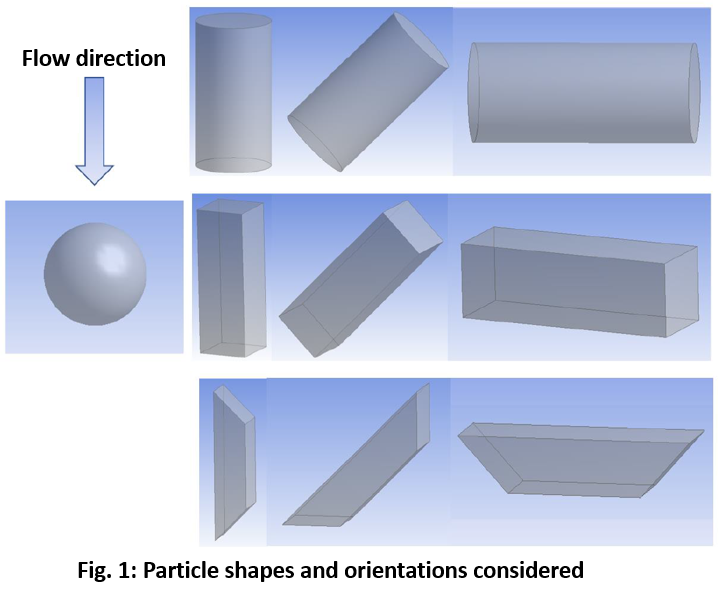Breadcrumb
- Home
- Publications
- Proceedings
- 2023 AIChE Annual Meeting
- Catalysis and Reaction Engineering Division
- Multi-Scale Modeling
- (693g) Impact of Particle Shape and Orientation on the Intraparticle Physicochemical Phenomena of Catalytic Particles

Due to their complexity, a fundamental understanding of polydispersed beds has not been reached. This necessitates studies at the individual particle scale, focusing on particle shape and orientation. In the conference, catalytic particles of various shapes are placed at different orientations with regards to the incoming flow, Fig. 1, and the physicochemical phenomena around and within them are resolved. Orientation determined the exposed surface area of the particle, and how the flow is distributed around it. Specifically, convectionâs impact was driven by the particleâs orientation, affecting the pressure and temperature profiles, and introducing significant local intraparticle temperature gradients which modified the reaction rate. Orientation also drove the intraparticle diffusion rate, either restricting or enhancing it, and thus the particle efficiency factor. These observations yield valuable insights into the association of particle form with the involved physicochemical phenomena, advancing reactor engineering.
[1] S. Kyrimis et al., Advanced Powder Technology, vol. 34, no. 2, p. 103932, 2023
[2] S. Kyrimis et al., Proceedings of the 10th International Conference on Fluid Flow, Heat and Mass Transfer (FFHMT '23) (Under review), 2023